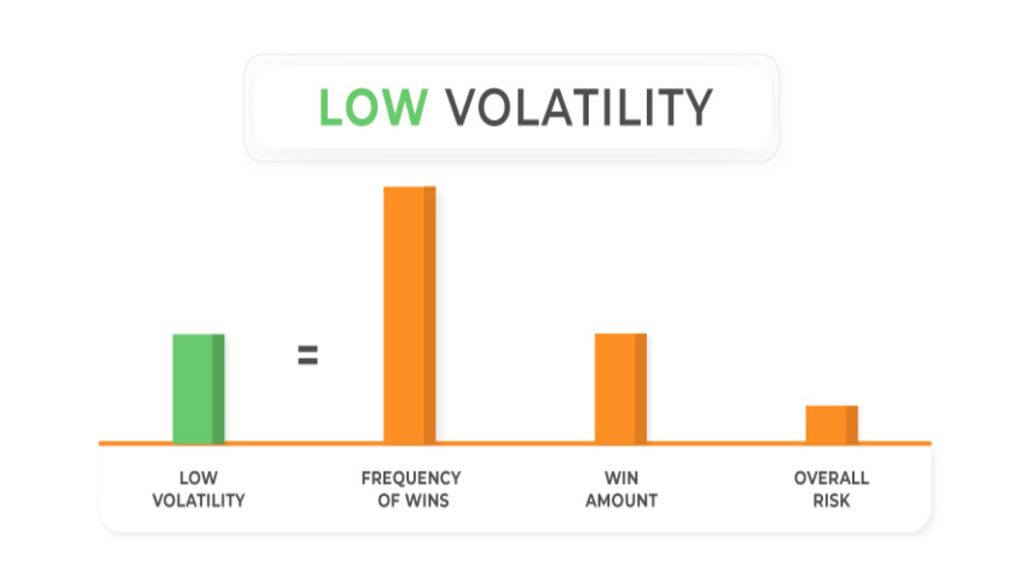Understanding Volatility in Casino Slots: A Comprehensive Guide

Volatility in slot machines is a crucial concept that players, both new and seasoned, should understand. It can significantly impact how you experience the game, affecting your potential wins, how often they occur, and how big they can be. But what does volatility mean in slots, and how can you use this knowledge to enhance your gameplay?
In this guide, we’ll break down the nuances of slot machine volatility, explain the differences between low, medium, and high volatility slots, and offer tips for choosing the right games based on your risk tolerance. Our exploration will include numbers, percentages, and concrete data to provide an informative and authoritative perspective on volatility in gambling.
What Does Volatility Mean in Slots?
Volatility, sometimes referred to as variance, in slots refers to the level of risk involved in playing a particular game. It tells you how often you can expect to win and how large those wins might be. In essence, it’s the balance between the frequency of payouts and the size of the payouts.
- Low volatility slot machines: These are games where wins are more frequent, but they tend to be smaller in value.
- High volatility slots: In contrast, these games pay out less frequently, but when they do, the wins are usually larger.
- Medium volatility slots: As expected, these sit somewhere in the middle, offering a balance between win frequency and payout size.
Understanding volatility is essential for tailoring your gaming experience to your budget and preferences. For instance, casual players with a smaller bankroll might prefer low volatility slots for their steady stream of smaller wins, whereas high-risk players looking for a big payoff may gravitate toward high volatility slots.
Low Volatility Slot Machines: Slow and Steady Wins the Race

Low volatility slot machines are ideal for players who prefer consistency over the thrill of large, sporadic wins. These slots typically feature frequent payouts, though they are modest in size. The idea is to sustain your bankroll over time, making them perfect for players who enjoy longer sessions and aren’t looking for massive wins. In low volatility slots, it’s common to see a return-to-player (RTP) percentage in the range of 92%-97%, meaning the house edge is relatively low.
Here’s a breakdown of what you can expect with low volatility slots:
| Feature | Low Volatility Slots |
|---|---|
| Win Frequency | High (frequent smaller wins) |
| Payout Size | Low to moderate |
| Ideal for | Players with smaller bankrolls |
| Examples | Starburst, Blood Suckers |
| RTP Range | 92%-97% |
Advantages of Low Volatility Slots
- Frequent Wins: If you enjoy seeing your balance grow steadily, low volatility slots will provide regular, albeit smaller, payouts.
- Longer Play Sessions: Frequent small wins extend the longevity of your bankroll, allowing for longer play sessions.
- Less Risk: The predictability of payouts makes these games less stressful, appealing to casual gamers or those who want to avoid big risks.
High Volatility Slots: Risky But Rewarding
High volatility slots, on the other hand, are for players willing to take significant risks for the possibility of substantial rewards. In these games, wins are infrequent, but when they do occur, they are often much larger than in low volatility games. If you’re chasing big jackpots or bonus features, high volatility games might be more to your liking. However, because of the scarcity of wins, these slots can drain your bankroll faster than low volatility options.
| Feature | High Volatility Slots |
|---|---|
| Win Frequency | Low (infrequent but larger wins) |
| Payout Size | High |
| Ideal for | Risk-takers with larger bankrolls |
| Examples | Book of Dead, Dead or Alive 2 |
| RTP Range | 94%-96% |
Advantages of High Volatility Slots:
- Big Wins: The allure of high volatility slots is the potential for massive payouts, often tied to bonus features or jackpots.
- Excitement and Thrill: If you enjoy the suspense of waiting for a big win, high volatility slots offer a more exhilarating experience.
- Larger Jackpots: The high volatility nature means the jackpots or maximum payouts are often much more substantial than in low or medium volatility slots.
However, keep in mind that high volatility slots require a bigger bankroll to withstand the dry spells. It’s not uncommon to go through several spins without a win, but the payout when it comes can be life-changing.
Balancing Risk and Reward: Medium Volatility Slots

For those who want a mix of frequent payouts and the chance for bigger wins, medium volatility slots are the sweet spot. They offer a balanced gaming experience, providing a reasonable frequency of wins with moderate to high payouts. Players can enjoy more action than in high volatility slots without the continuous small wins that low volatility games offer.
| Feature | Medium Volatility Slots |
|---|---|
| Win Frequency | Moderate (balanced win rate) |
| Payout Size | Moderate to high |
| Ideal for | Players who want balance |
| Examples | Gonzo’s Quest, Thunderstruck II |
| RTP Range | 94%-97% |
How to Choose the Right Slot Based on Volatility
Choosing the right slot machine depends largely on your risk tolerance, bankroll, and what you hope to get out of the experience. Here are some practical tips:
- Know Your Bankroll: If you have a smaller budget, stick to low volatility slot machines to maximize your playing time. Higher volatility games can quickly eat up your bankroll during dry spells.
- Risk Tolerance: If you’re the type of player who thrives on risk, high volatility slots may provide the thrills you’re looking for. However, keep in mind that these games require patience and a more substantial bankroll.
- Time Commitment: For players who want longer gaming sessions without high-stress gameplay, low or medium volatility slots are better options. High volatility games, while rewarding, may lead to shorter play sessions due to rapid bankroll depletion.
- Research RTP: Always check the RTP (Return to Player) percentage. Games with higher RTPs generally give back more to players over time, although this doesn’t guarantee short-term wins.
Conclusion: The Art of Managing Volatility in Gambling
Volatility in gambling is an essential aspect of the slot machine experience. Whether you prefer low volatility slot machines for frequent, smaller wins or high volatility slots for the possibility of substantial payouts, understanding the risks and rewards associated with each type of game is key to managing your bankroll and maximizing your enjoyment.
Remember, there’s no one-size-fits-all when it comes to slots. The best game for you will depend on your personal preferences, risk appetite, and goals. Whether you’re in it for long sessions and consistent payouts, or you’re chasing that elusive jackpot, understanding slot machine volatility will give you a significant advantage in making the right choices.
FAQ
Volatility in slot machines, also known as variance, refers to the level of risk associated with a particular game. It determines how frequently a slot pays out and the size of the payouts. Low volatility slots offer frequent but smaller wins, while high volatility slots pay out less often but tend to offer larger prizes.
Volatility influences both the frequency and size of wins. Low volatility slots will give you smaller, frequent wins, which can extend your gameplay, while high volatility slots have the potential for big wins but occur less frequently. The choice depends on your risk tolerance and bankroll.
It depends on your goals and budget. If you prefer a more steady gameplay with regular, smaller wins, low volatility slots are better. If you’re looking for bigger, riskier payouts and can handle longer dry spells, high volatility slots may be more suitable.
Yes, many slot games list their volatility in the game information section. If it’s not explicitly mentioned, you can often tell by the payout structure: games with bigger jackpots or bonuses tend to be high volatility, while games with frequent small wins are usually low volatility.
Examples of low volatility slots include Starburst and Blood Suckers, which offer frequent but smaller payouts. High volatility slots include Dead or Alive 2 and Book of Dead, where the wins are larger but less frequent.
Not necessarily. RTP (Return to Player) indicates the percentage of wagered money that will theoretically be returned to players over time, but it doesn’t always reflect volatility. A slot can have a high RTP and still be high volatility, offering bigger payouts less frequently.
If you have a smaller bankroll, it’s wise to stick to low or medium volatility slots to stretch your funds and enjoy longer gameplay. High volatility slots can deplete your balance quickly, so they are better suited for players with a larger budget who are willing to take risks for bigger rewards.